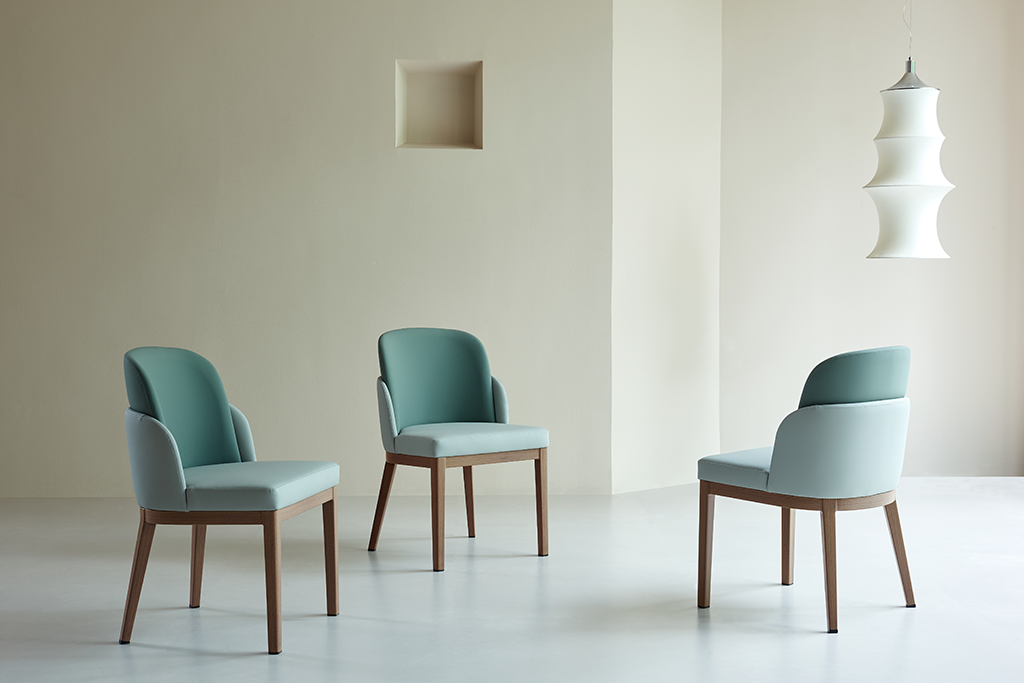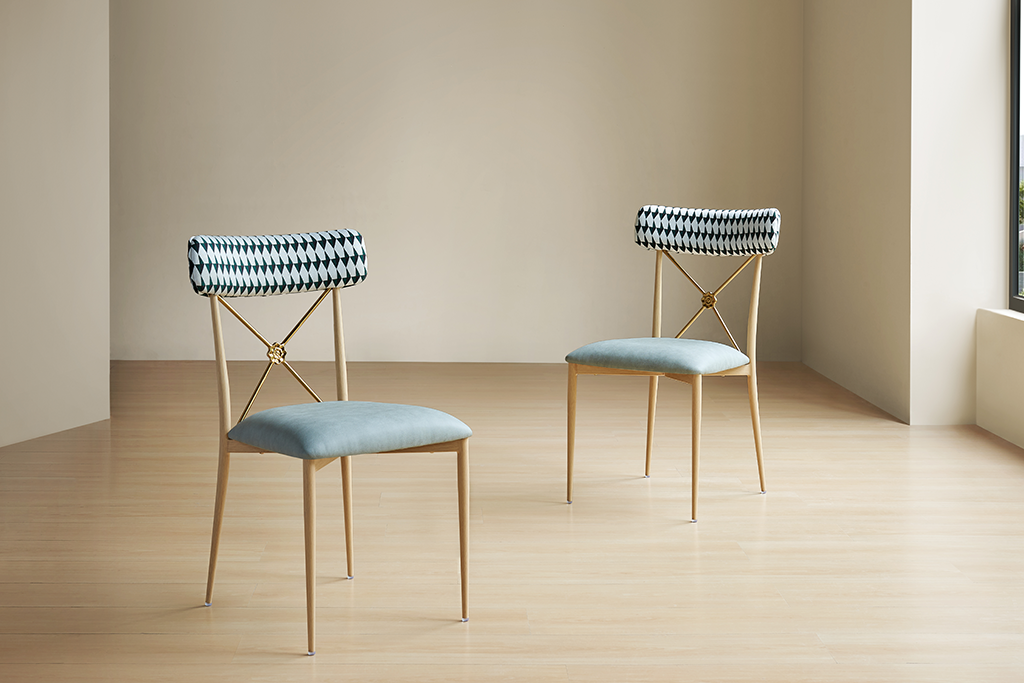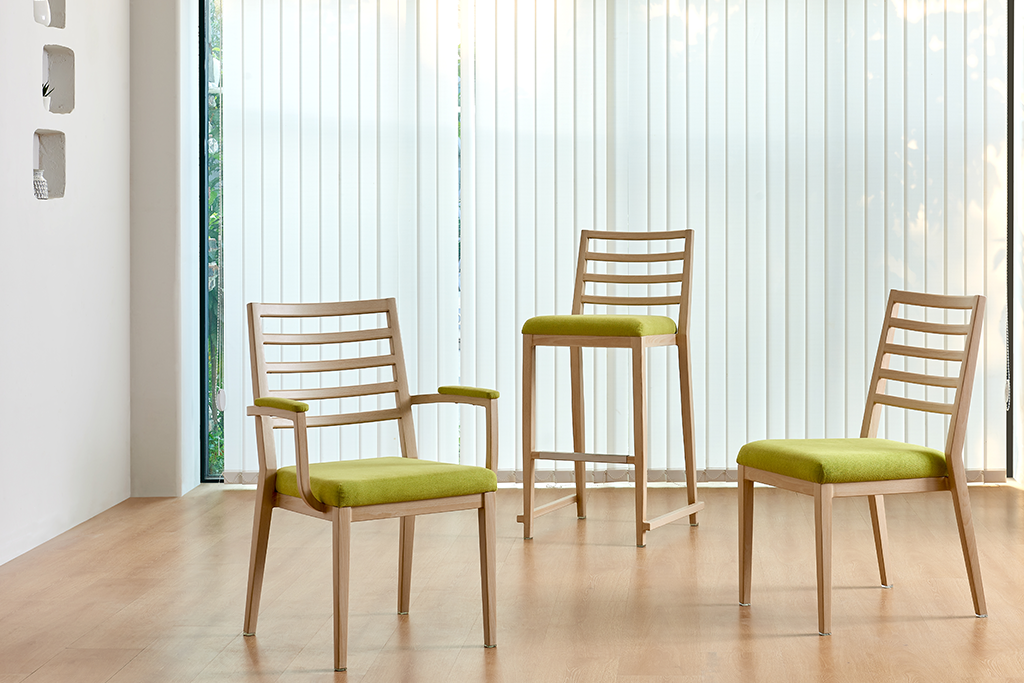Choosing Dining Chairs for Assisted Living Facilities: A Guide to Senior-Friendly Seating
Choosing the right dining chair is crucial for the well-being of elderly residents in assisted living facilities for several reasons. Firstly, dining chairs play a significant role in ensuring comfort and safety during meal times, which are essential for maintaining proper nutrition and overall health in seniors. Additionally, the dining experience goes beyond mere sustenance—it serves as a social and communal activity that can greatly impact the residents' emotional well-being and sense of belonging.
Comfortable and safe seating contributes to a positive dining experience and overall quality of life for elderly residents in assisted living facilities in various ways. Firstly, it allows seniors to sit comfortably and enjoy their meals without experiencing discomfort or strain, which can enhance their appetite and digestion. Moreover, safe seating options reduce the risk of accidents such as falls or injuries, promoting a sense of security and confidence among residents.
By prioritizing comfort and safety in the selection of dining chairs, assisted living facilities can create an environment that fosters independence, dignity, and well-being for their elderly residents. A positive dining experience not only improves nutrition intake but also promotes social interaction, enjoyment, and overall satisfaction with life in the facility. Therefore, choosing the right assisted living dining chairs is an essential aspect of providing quality care and support to elderly residents in assisted living facilities.

Understanding the Unique Needs of Elderly Residents
Seniors living in assisted living facilities face specific challenges that necessitate careful consideration when selecting dining chairs. These challenges can vary widely but often revolve around issues related to mobility, comfort, and safety.
★ What are the specific challenges faced by seniors living in assisted living facilities?
1. Mobility Limitations: Many elderly residents in assisted living facilities experience mobility limitations, which can range from difficulty walking to relying on mobility aids such as walkers or wheelchairs. These mobility challenges can make it challenging for seniors to navigate their living environment, including moving to and from the dining area.
2. Decreased Muscle Strength: As individuals age, they may experience a decline in muscle strength and flexibility, making it more challenging to sit and stand from chairs. Seniors with weakened muscles may require additional support and stability when using dining chairs to prevent falls or accidents.
3. Posture Issues: Posture problems such as kyphosis (hunched back) or lordosis (swayback) are common among elderly individuals. Poor posture can lead to discomfort and increase the risk of back pain or injury, especially when sitting for extended periods.
4. Cognitive Impairment: Some seniors living in assisted living facilities may experience cognitive impairment conditions such as dementia or Alzheimer's disease. Cognitive challenges can affect a resident's ability to safely use dining chairs and may require specialized seating options or supervision.
★ How do factors like mobility limitations and posture issues influence the selection of dining chairs?
Factors like mobility limitations and posture issues significantly influence the selection of dining chairs for seniors in assisted living facilities. When choosing dining chairs, it's essential to consider the following:
1. Accessibility: Chairs should be easily accessible for seniors with mobility challenges, with features such as armrests and sturdy frames to provide support when sitting and standing. Additionally, chairs with higher seat heights or those that accommodate mobility aids can facilitate easier access for residents with limited mobility.
2. Supportive Cushioning: Dining chairs should offer supportive cushioning to promote proper posture and alleviate pressure points, particularly for seniors with posture issues. Ergonomic designs and contoured seats can help maintain spinal alignment and reduce discomfort during meals.
3. Stability and Safety: Chairs should be stable and secure to prevent tipping or sliding, especially for seniors with balance issues. Safety features such as non-slip feet and sturdy construction are essential to minimize the risk of falls or accidents while dining.
4. Customization Options: Providing customization options such as adjustable seat heights or removable cushions allows for individualized comfort and support, catering to the specific needs of each resident. This flexibility ensures that dining chairs can accommodate varying mobility levels and posture requirements among residents.
By considering factors like mobility limitations and posture issues in the selection of dining chairs, assisted living facilities can ensure that their elderly residents have access to safe, comfortable, and supportive seating options during meal times. This proactive approach to seating selection promotes independence, dignity, and overall well-being for seniors in assisted living settings.

Key Features of Senior-Friendly Dining Chairs
Dining chairs for elderly residents in assisted living facilities should prioritize specific features to ensure comfort, safety, and usability. These key features play a crucial role in enhancing the dining experience and promoting overall well-being among seniors.
★ What features should dining chairs prioritize to ensure comfort and safety for elderly residents?
1. Supportive Cushioning: Dining chairs should feature supportive cushioning in the seat and backrest to provide comfort and alleviate pressure points. High-density foam or memory foam padding can help reduce discomfort and promote better posture during meals.
2. Ergonomic Design: Chairs with ergonomic designs that promote proper posture and alignment are essential for seniors. Features such as lumbar support, contoured seats, and adjustable backrests help prevent strain on the back and neck, enhancing comfort and reducing the risk of musculoskeletal issues.
3. Accessibility: Dining chairs should be accessible and easy to use for seniors with mobility challenges. Consider features such as armrests for support when sitting and standing, as well as chairs with higher seat heights to accommodate mobility aids like walkers or wheelchairs.
4. Stability and Durability: Chairs should be sturdy and stable to prevent tipping or sliding during use. Look for chairs with robust construction, reinforced joints, and non-slip feet to ensure safety and stability for elderly residents.
★ How can ergonomic design and supportive cushioning enhance the dining experience for seniors?
Ergonomic design and supportive cushioning play a significant role in enhancing the dining experience for seniors in several ways:
1. Improved Comfort: Ergonomic chairs with supportive cushioning provide a comfortable seating surface that reduces pressure points and promotes better posture. This enhances comfort during meal times and allows seniors to enjoy their dining experience without discomfort or pain.
2. Enhanced Support: Ergonomic chairs with features like lumbar support and adjustable backrests provide additional support for seniors, reducing strain on the back and neck. This helps alleviate discomfort and fatigue, allowing seniors to sit comfortably for longer periods.
3. Better Posture: Ergonomic chairs encourage proper posture and alignment, which is essential for maintaining spinal health and reducing the risk of musculoskeletal issues. Supportive cushioning and adjustable features help seniors maintain a neutral spine position, reducing the risk of back pain or injury.
★ Which safety features are essential to minimize the risk of accidents and promote peace of mind?
Several safety features are essential in dining chairs for elderly residents to minimize the risk of accidents and promote peace of mind:
1. Non-Slip Surfaces: Chairs should have non-slip surfaces on the seat and feet to prevent sliding or tipping during use. This helps ensure stability and reduces the risk of falls or accidents.
2. Sturdy Construction: Chairs should be constructed from durable materials with reinforced joints and sturdy frames to withstand daily use. This promotes stability and prevents chairs from collapsing or breaking under the weight of elderly residents.
3. Easy-to-Reach Controls: Chairs with easy-to-reach controls for adjustable features like seat height or reclining angle are essential for seniors with mobility challenges. This allows seniors to adjust the chair safely and independently, promoting autonomy and reducing the risk of accidents.
4. Smooth Edges and Corners: Chairs should have smooth edges and rounded corners to minimize the risk of bumps or injuries, especially for seniors with limited mobility or visual impairments. This promotes safety and reduces the risk of accidents during use.
By prioritizing these safety features in dining chairs for elderly residents, assisted living facilities can create a safe and comfortable dining environment that promotes independence, dignity, and overall well-being.

Choosing the Right Dining Chairs for Assisted Living Facilities
When selecting dining chairs for assisted living facilities, several considerations should be taken into account to ensure the comfort, safety, and usability of elderly residents. At Yumeya Furniture, we understand the importance of providing senior-friendly seating options, and we prioritize these considerations in our selection of dining chairs.
1. Comfort: Dining chairs should offer sufficient cushioning and support to promote comfort during meals. Consider factors such as seat depth, backrest height, and armrest design to ensure optimal comfort for elderly residents.
2. Accessibility: Chairs should be easily accessible for seniors with mobility challenges. Look for features such as armrests and stable frames to provide support when sitting and standing, as well as chairs with higher seat heights to accommodate mobility aids like walkers or wheelchairs.
3. Safety: Safety features such as non-slip surfaces, sturdy construction, and easy-to-reach controls are essential to prevent accidents and injuries. Ensure that chairs meet safety standards and guidelines to minimize the risk of falls or accidents.
4. Durability: Dining chairs should be constructed from durable materials with reinforced joints and sturdy frames to withstand daily use in assisted living facilities. Consider factors such as weight capacity and maintenance requirements to ensure longevity and reliability.
Conclusion:
In conclusion, selecting senior-friendly assisted living dining chairs is essential for ensuring the comfort, safety, and overall well-being of elderly residents. At Yumeya Furniture, we understand the significance of prioritizing comfort, safety, and usability in our seating options, and we strive to provide solutions that meet the specific needs of assisted living environments. By collaborating closely with facility managers, caregivers, and occupational therapists, we aim to create a dining environment that promotes independence, dignity, and satisfaction among elderly residents. We encourage facility managers and caregivers to choose dining chairs that prioritize senior-friendly features, such as supportive cushioning, accessibility, and stability, to enhance the dining experience and promote peace of mind for residents in assisted living facilities.











































































































